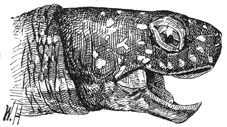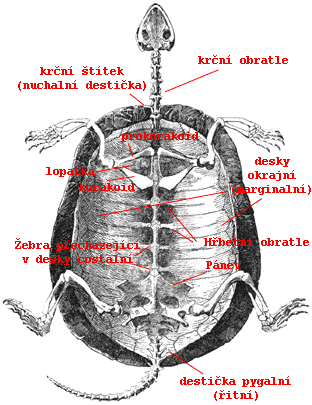Last major update of this page was in early 1996. I am not satisfied
with the content. I am working hard on a new version (overview, keratine / bone structure, ear structure and
the others interesting chelonian special topics) which I plan to finish till the end of February
1999. I am sorry to use the “time shortage” argument -- unfortunately, it's true.
Please accept my apology.
dk
Anatomy of turtle
The backbone of the turtle is
partly coalescent with the shell. Most species are able to hide the whole head, limbs and
tail. Some species can even "cover" all the soft parts with movable shell scutes. The upper
part of the shell is called the carapace, the lower part the plastron. Usually the turtles'
carapace has 5 central scutes, 8 costals and 24 marginal scutes: The
amount marginal scutes (plus whether odd or even) and the shape of the plastron is one of the
most significant differentiations between species.
 To find out the sex of hatchlings
is a little bit hard. For matured turtles you can use the rule that males
have a longer tail (and claws) and the plastron is bent inside for good
stability in mating. The male is nearly always smaller than a female. Exceptional are only
the largest terrestial species, like giant tortoises.
To find out the sex of hatchlings
is a little bit hard. For matured turtles you can use the rule that males
have a longer tail (and claws) and the plastron is bent inside for good
stability in mating. The male is nearly always smaller than a female. Exceptional are only
the largest terrestial species, like giant tortoises.

(Emys orbicularis,
european pond turtle)
| krční obratle | cervical vertebrals
| krční štítek | nuchal scute
| lopatka | shoulder-blade
| okrajní desky | marginal scutes
| žebra přecházející | v desky costalní ribs continuing | into the costal scutes hřbetní obratle | dorsal vertebrals
| pánev | pelvis
| destička řitní | pygal scute
| |